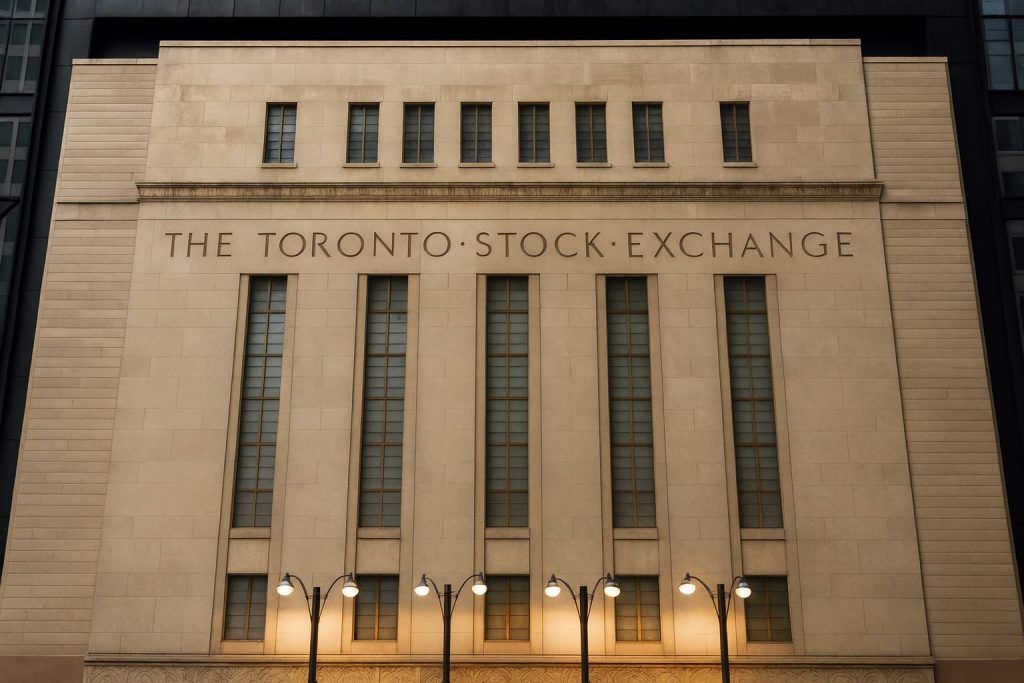U.S. stocks finished sharply lower on Thursday, November 20, 2025, after a frantic session that saw an early AI-fueled surge turn into a broad-based selloff. A blockbuster earnings report from Nvidia, a long-delayed U.S. jobs release, and fresh Federal Reserve minutes all collided to drive another volatile day for the US stock market today. [1]
Market snapshot: Dow, S&P 500, Nasdaq today
By the closing bell:
- Dow Jones Industrial Average fell roughly 0.5%, shedding about 230 points to finish near 45,900. [2]
- S&P 500 dropped around 1.3% to close near 6,559, pulling further back from record highs above 6,900 set in late October. [3]
- Nasdaq Composite, hit hardest by the tech reversal, slid about 1.5–1.6% to roughly 22,200. [4]
Earlier in the day the S&P 500 was up almost 2% and the Dow was more than 700 points higher before both reversed into the red, with the Dow registering an intraday swing of over 1,100 points. [5]
The VIX “fear gauge” spiked from the low-20s toward the high-20s as the rally faded, underscoring how fragile risk appetite has become. [6]
Wall Street’s rollercoaster: Nvidia rally turns into late-day selloff
The mood on Wall Street flipped hard over the course of the session:
- At the open, Nvidia’s blowout earnings and bullish guidance sparked a powerful risk-on move, lifting major indices more than 1% and sending the Nasdaq up over 2% intraday. [7]
- By midday, those gains had evaporated as investors questioned whether AI-heavy tech valuations can keep defying gravity, especially with interest-rate uncertainty lingering. [8]
- Into the close, selling broadened beyond semiconductors, dragging down most mega‑cap growth names and leaving all three major indices decisively lower on the day. [9]
A key technical element added fuel: trend-following hedge funds are now in the spotlight. Goldman Sachs estimates that after the S&P 500 slipped below a key level around 6,725 and closed near 6,642 earlier this week, rules-based funds could dump $40 billion or more in global equities over the coming days, potentially rising toward $65 billion if losses deepen. [10]
That systematic selling backdrop helps explain why intraday bounces have been so unstable: every attempt at a sustained Nvidia-led rebound is meeting a wall of supply.
Nvidia’s record quarter: “Off the charts” demand, but AI bubble fears linger
Nvidia remains the center of gravity for the US stock market today:
- The chip giant reported record quarterly revenue of $57.0 billion, up 22% quarter-on-quarter and 62% year-on-year. [11]
- Its data center business — the heart of AI infrastructure demand — generated $51.2 billion, up roughly 25% vs. last quarter and more than 60% vs. a year earlier. [12]
- Nvidia guided for about $65 billion in revenue next quarter, well above Wall Street’s expectations, with CEO Jensen Huang describing AI chip demand as “off the charts.” [13]
Initially, markets responded exactly as the bulls hoped: Nvidia shares surged around 5% in early trading and helped pull the entire tech complex higher. [14]
But by the afternoon:
- Nvidia had reversed into a loss of roughly 1–2% on the day. [15]
- The PHLX Semiconductor Index swung from green to a loss of about 2%. [16]
- High‑flying AI names such as Palantir, Oracle and Robinhood dropped between roughly 5% and 9%, highlighting how crowded the AI trade has become. [17]
Behind the price action is a growing tug-of-war over the “AI bubble” narrative:
- A recent Bank of America global fund manager survey shows around 45% of managers now cite an AI bubble as the biggest tail risk in markets. [18]
- Separate research finds about 20% of institutional investors believe corporate America is overinvesting in AI-related capex, a level of concern not seen in nearly two decades. [19]
- High-profile investors from Ray Dalio to Michael Burry have warned about richly priced tech leaders like Nvidia, even as they differ on timing and severity of any eventual pullback. [20]
In other words, Nvidia’s results validate the earnings power behind AI — but they haven’t fully quelled fears that AI-related equities have run too far, too fast.
Jobs report and Fed minutes: Mixed signals on December rate cut
If Nvidia set the micro tone, U.S. labor data and Fed minutes drove the macro narrative for the stock market today.
Delayed September jobs report finally lands
Because of a 43-day government shutdown, the Labor Department’s September jobs report was delayed and only released today — making it the last major employment reading before the Fed’s December meeting. [21]
Key highlights:
- Nonfarm payrolls: up 119,000 vs. economist expectations of around 50,000 jobs. [22]
- August was revised from a modest gain to a 4,000-job decline, underlining how fragile the labor market has become. [23]
- Unemployment rate: rose to 4.4%, the highest level since 2021. [24]
- Average hourly earnings: grew 0.2% month-on-month, suggesting wage pressures are cooling but not collapsing. [25]
The report paints a split picture: hiring is stronger than expected, but unemployment is creeping up — hardly a clear signal for a central bank debating whether to cut rates again.
Fed minutes show a divided central bank
Complicating matters further, the Federal Reserve yesterday released minutes from its October 28–29 FOMC meeting, which show: [26]
- “Many” policymakers opposed another interest rate cut in December, worried about undermining progress on inflation. [27]
- Officials are grappling with a data vacuum created by the shutdown, making it harder to judge the true state of the economy. [28]
Rate markets captured that ambivalence:
- Futures pricing implied roughly a 40% chance of a December rate cut after the jobs report, up from around 30% the day before — but still far from a done deal. [29]
- The 10‑year Treasury yield slipped to about 4.10% from roughly 4.14% on Wednesday, reflecting a mild bid for duration as investors focused on the rise in unemployment. [30]
For equities, this “not too hot, not too cold” data proved frustrating: it didn’t decisively support either the early bullish narrative (soft landing plus rate cuts) or a clean bearish one (recession risk). Instead, it left traders again obsessing over valuation and positioning.
Sector movers: Tech stumbles, staples and Walmart shine
Technology and AI: From leaders to laggards
The information technology sector ended the day as one of the worst performers in the S&P 500, reversing strong early gains. [31]
Notable dynamics:
- Big Tech (Amazon, Meta, Alphabet, Microsoft) surrendered much of the morning rally and finished either flat or lower. [32]
- Semiconductors broadly traded down despite Nvidia’s headline beat, as investors worried about overbuilding of data center capacity and circular AI spending within the sector. [33]
- Cybersecurity firm Palo Alto Networks slid more than 6% after announcing a $3.35 billion acquisition of cloud-native observability company Chronosphere, a reminder that deal-making risk can bite even in hot subsectors. [34]
Consumer staples and Walmart: Defensive winners
In stark contrast, the consumer staples sector led the market, buoyed by Walmart’s standout quarter:
- Walmart reported quarterly revenue of about $179.5 billion, up roughly 5–6% year-on-year, with U.S. comparable sales rising just over 4% and e-commerce surging around 27–28%. [35]
- The retailer raised its full-year outlook for both sales (now expecting 4.8–5.1% growth) and adjusted EPS ($2.58–$2.63), and announced plans to switch its stock listing from the NYSE to Nasdaq in December — a symbolic nod to its increasingly tech-driven strategy. [36]
- Walmart shares jumped about 6%, making them one of the top gainers in both the Dow and the S&P 500 on a day when most large-cap stocks were in the red. [37]
Walmart’s performance reinforced a broader theme: even as AI-rich tech names wobble under the weight of expectations, defensive consumer franchises that can capture both high- and low-income spending are still finding support.
Crypto, high-flyers and risk sentiment
Beyond stocks and bonds, Thursday’s moves also underscored a risk‑off tilt across other asset classes:
- Bitcoin dropped more than 5% to roughly $86,500, extending its month-to-date decline to around 20% and marking a new seven‑month low. [38]
- Crypto-related equities such as Robinhood and Coinbase fell around 9% and 7%, respectively, amid growing concerns that speculative pockets of the market are unwinding. [39]
At the same time, some market strategists argue that the recent pullback in high‑beta names — from AI leaders to crypto proxies — may be more of a “healthy correction” than the start of a full‑blown bear market, citing still‑solid earnings momentum in tech and a labor market that is slowing but not collapsing. [40]
What today’s US stock market move means for investors
For traders, Thursday was a tough day. For long‑term investors, it mostly reinforced themes that have been building for weeks:
- Volatility is back in a big way
- AI remains a double-edged sword
- Nvidia’s results prove that AI-driven earnings growth is real and massive, but also highlight how concentrated market leadership has become. [43]
- Surveys show AI bubble fears rising, with investors increasingly worried about overinvestment and rich valuations even as the underlying technology continues to spread. [44]
- Macro crosswinds aren’t going away
- A jobs report that is neither obviously strong nor clearly weak leaves the Fed’s December rate decision in limbo. [45]
- With Fed officials divided and data distorted by the shutdown, the central bank may rely more heavily on market conditions — including episodes of volatility like today’s — when calibrating policy. [46]
- Rotation beneath the surface
- The outperformance of staples and big-box retail versus speculative growth is a classic late‑cycle pattern, where investors prize cash flow resilience over story stocks. [47]
- If volatility persists, this rotation toward defensives and quality could deepen, even if headline indices remain range‑bound.
Bottom line
The US stock market today was a textbook case of good news colliding with great expectations:
- Nvidia delivered extraordinary numbers, but not enough to silence bubble worries.
- The jobs report showed resilient hiring and higher unemployment, keeping both optimists and pessimists supplied with ammunition.
- The Fed remains split, and systematic trading models are poised to amplify any move that breaks key levels.
For investors, the message is less about any single day’s closing print and more about the regime shift underway: higher volatility, more policy uncertainty, and a market increasingly dependent on a narrow set of mega‑cap winners.
That combination rewards diversification, careful risk management, and a focus on balance‑sheet strength rather than just the loudest growth story of the moment.
This article is for informational purposes only and does not constitute investment advice. Always do your own research or consult a licensed financial professional before making investment decisions.
References
1. www.reuters.com, 2. www.investing.com, 3. www.investing.com, 4. indexes.nasdaqomx.com, 5. apnews.com, 6. www.ft.com, 7. investor.nvidia.com, 8. www.reuters.com, 9. www.reuters.com, 10. www.reuters.com, 11. investor.nvidia.com, 12. investor.nvidia.com, 13. nypost.com, 14. www.reuters.com, 15. www.reuters.com, 16. www.reuters.com, 17. www.ft.com, 18. markets.financialcontent.com, 19. www.ainvest.com, 20. www.investopedia.com, 21. www.marketscreener.com, 22. www.marketscreener.com, 23. www.reuters.com, 24. www.marketscreener.com, 25. www.marketscreener.com, 26. www.federalreserve.gov, 27. www.reuters.com, 28. www.investopedia.com, 29. www.investopedia.com, 30. www.investopedia.com, 31. www.reuters.com, 32. www.reuters.com, 33. www.reuters.com, 34. www.reuters.com, 35. corporate.walmart.com, 36. www.reuters.com, 37. www.reuters.com, 38. www.ft.com, 39. www.investopedia.com, 40. www.investopedia.com, 41. apnews.com, 42. www.reuters.com, 43. investor.nvidia.com, 44. markets.financialcontent.com, 45. www.investopedia.com, 46. www.reuters.com, 47. www.reuters.com







